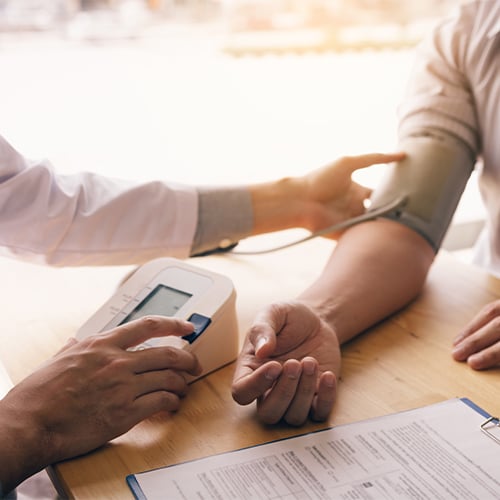When most people hear the word “cholesterol” they automatically link it to “heart disease”, and almost everyone gets panicky when their levels are high. But let’s go beyond this knee-jerk reaction and learn a bit more about cholesterol.
Cholesterol as a Fundamental Building Block of the Body
First off, cholesterol is essential to our body and our health. Here’s a rundown of cholesterol’s essential roles and uses:
- Part of all cell membranes
- Required for signal transmission of nerves
- Precursor (starting ingredient) of all steroid hormones, which include those needed for blood pressure regulation, stress response, and reproduction such as estrogen and testosterone
- Precursor of Vitamin D (it’s actually not a vitamin, but a hormone!), which has multiple roles in the body, like boosting your immune system and helping regulate your moods
- Precursor of bile salts, which are crucial to both digestion and to excretion of waste from the body
Cholesterol’s bad reputation stems from the fact it can cause problems if you have too much of it or if a lot of it gets oxidized . We’re used to looking at cholesterol levels superficially: if it’s above this level, bad; if it’s below this level, good. However, there’s more to it than that.
The Different Types of Cholesterol
“Lipoproteins” transport cholesterol in the body through the bloodstream: High-Density Lipoprotein (HDL) known as the “good” cholesterol, and Low-Density Lipoprotein (LDL) known as the “bad” cholesterol.
LDL, cholesterol, carries cholesterol to the cells that need it. However, it is also one of the main components of atherosclerotic plaques, which accumulate in the walls of arteries and can eventually cause blockage of the blood vessel. HDL cholesterol, carries excess cholesterol from the tissues back to the liver for excretion; it aids in disposing excess cholesterol from the body.
The Role of Lipid Profile Tests
Your height, weight, and general physical make-up are not reliable indicators of your cholesterol levels. A lipid profile test measures the quantity of total, LDL & HDL cholesterol in your bloodstream.
Reference ranges for lipid levels in the general population* are:
- A total cholesterol level less than 200 mg/dL is considered ideal. Values between 200 mg/dL and 250 mg/dL are regarded as slightly elevated, and above 250 mg/dL is considered as significantly high.
- The ideal HDL level is 60 mg/dL or higher, but at least 40 mg/dL for males, and at least 50 mg/dL for females are acceptable levels.
- LDL levels under 100 mg/dL are deemed acceptable, although preferably they should be under 70 mg/dL.
*Target levels may differ in those people who already have comorbid chronic conditions.
Beyond looking at just the levels of cholesterol, take the time to look at the ratios between the different cholesterols and HDL cholesterol. Some labs will already incorporate the total cholesterol/HDL ratio in their results. This ratio has been shown by research to be a better predictor of the risk for cardiovascular disease compared to just looking at total cholesterol and/or LDL levels alone. To compute your total cholesterol/HDL ratio, simply divide your total cholesterol level with your HDL levels (making sure you are using the same units for both values, either mmol/L or mg/dl). In general, a ratio 5 and higher indicates an increased risk for cardiovascular disease; an ideal ratio is 3.5 or lower.
(Other important factors include the size, density and oxidation of the LDL particles, however these advanced lipid tests are yet to become available in the country.)
Detrimental Effects of High Cholesterol
When you have too much LDL cholesterol, or the particles are small and dense, or a lot of it is oxidized by free radicals, these increase your risk for cardiovascular disease such as heart attack, hypertension (a.k.a. high blood) and stroke. Different factors increase your cholesterol levels: diet, living a sedentary lifestyle, smoking, alcohol consumption, and high-stress can elevate your cholesterol levels. Other health conditions like insulin resistance, diabetes mellitus, and obesity can contribute to higher cholesterol levels as well.
Cut Your Cholesterol Fast
Talking to your doctor should be your first step if you have high cholesterol. They will be able to assist you in creating an effective treatment strategy. You can take a few self-care measures, like eating a balanced diet and exercising regularly, to lower your cholesterol. Supplements can help and ,medication might be necessary as well. Lower your risk of heart disease and help keep your cholesterol under control by adhering to these recommendations.
You can also discover more about food, lifestyle modifications, and even strategies to lower your risk of high cholesterol by visiting Tamang Alaga. To learn more about cholesterol and other health issues, don’t forget to follow the link.
References:
https://www.cdc.gov/cholesterol/ldl_hdl.htm
https://www.cdc.gov/cholesterol/myths_facts.htm
https://www.heart.org/en/health-topics/cholesterol
https://www.mayoclinic.org/diseases-conditions/high-blood-cholesterol/symptoms-causes/syc-20350800
Cholesterol ratio or non-HDL cholesterol: Which is most important? – Mayo Clinic
Cholesterol Ratio: Men vs. Women, HDL vs. LDL, and More (healthline.com)








